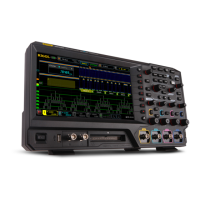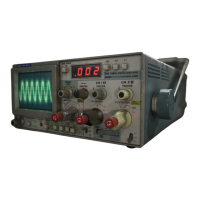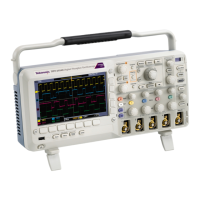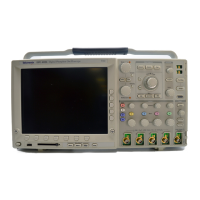Commands Listed in Alphabetical Order
Arguments
NONe defeats th
e trigger reset feature.
TIMEOut initiates a reset if the timeout conditions specified by
TRIGger:B:RE
SET:TIMEOut are met.
STATE initiates a reset if the state conditions specified by
TRIGger: B:
RESET:SOUrce, TRIGger:B:RESET:STATE, and
TRIGger:B:RESET:THReshold are met.
TRANsition
initiates a reset if the transition conditions specified
by TRIGger:B:RESET:SOUrce, TRIGger:B:RESET:TRANsition, and
TRIGger:B:RESET:THReshold are met.
Examples
TRIGGER:B:RESET:TYPE NONE deactivates the sequential trigger reset.
TRIGGER:B:RESET:TYPE? This query might return :TRIGGER:B: RESET:TYPe
TIMEOUT
, indicating that the sequential trigger reset is active following a timeout.
TRIGger:B:STAT E
This command sets o r queries the state of B trigger activity. If the B trigger state
is on, the B trigger is part of the tri
ggering sequence . If the B trigger state is off,
then only the A trigger causes the trigger event.
Group
Trigger
Syntax
TRIGger:B:STATE {ON|OFF|<NR1>}
TRIGger:B:STATE?
Related Commands
TRIGger:A:MODe
Arguments
ON indicates that the B trigger is active and causes trigger events in conjunction
with the A trigger.
OFF indicates that only the A trigger causes trigger events.
<NR1>
A 0 turns off the B trigger; any other value activates the B trigger.
Examples
TRIGGER:B:STATE ON sets the B tri
gger to active, making it capable of causing
trigger events.
TRIGGER:B:STATE? might return
:TRIGGER:B:STATE 0, indicating that the B
trigger is inactive and that only the A trigger causes trigger events.
DPO7000, DPO70000/B and DSA7000/B Series Programmer Manual 2-615
